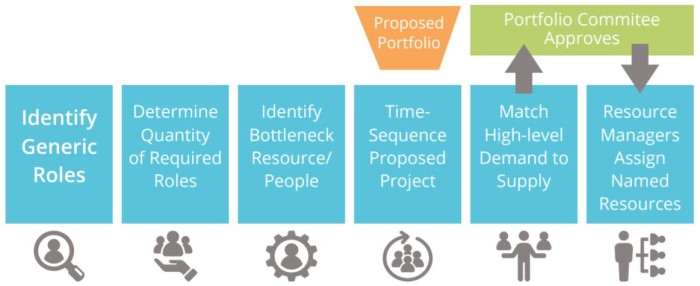Introduction
Embarking on a resource management journey can be difficult not because the work to reach the destination is difficult but because most people don’t see the destination without some help. It’s not a common practice in most companies. The goal of this white paper is to offer you a tacit understanding of how the four disciplines that comprise what we call Strategic Workforce Enablement can be incorporated into your current company culture. We’ve been helping companies develop business cases for new initiatives for decades, and we’ve learned a few things along the way. What makes a business case successful is 25% the numbers written in the business case and 75% the surety of the person presenting the business case that the initiative will be successful and will bring tangible benefit to the company. Given our long involvement in the field of “getting non-standard work done successfully” we feel uniquely qualified to offer some of the more nuanced issues that one might encounter on one’s journey so that when you decide to buy resource management software and hire resource managers you can confidently sound like you know exactly what steps are necessary to make your company’s resource management journey a success.
The Four Disciplines
According to Forbes, 81% of executives consider agility to be the most important characteristic of a successful organization. For those that succeed at achieving greater agility, respondents cite impressive rewards: faster time to market (60%), faster innovation (59%) and improved non-financial results (58%).
While it’s impossible to know exactly how each individual CEO was defining agility when they answered the question, for our purposes we’ll define agility as the organizational and individual ability to respond both quickly and appropriately to an emergent event. This specific definition was chosen to guarantee that the recommendations and approaches you will find in this white paper don’t fall into the trap of being an agile sounding process that fails to deliver agility. With that in mind we’ve chosen to focus on a practice we call Strategic Workforce Enablement. The name was chosen to highlight that this approach is NOT a rehash of common practices. While this can be done slowly with increased levels of practice maturity occurring as a simple result of learning over time, it can’t be done without conscious commitment.
There are four disciplines that make up Strategic Workforce Enablement
Portfolio Resource Planning
- Generic roles
- Bottleneck resources
- Supply & demand
- Sequenced delivery
- First order resource allocation
Resource Allocation Management
- Named resources
- Skills
- Workload planning
Resource Management
- Career goals
- Knowledge sharing
People Capability Planning
- Competencies
- Utilization
- Work assignments
The First Discipline: Portfolio Resource Planning
Portfolio Resource Planning is a support function required by the strategic portfolio process. Many organizations today use a process similar to portfolio management called prioritize demand management but there is a major difference between the two approaches. True portfolio management is designed to optimize the investments the company makes to ensure that the company is achieving its strategy. Demand management is designed to meet the operational priorities of the business and do a small number of new things. Both disciplines require resource planning for maximum effectiveness, but strategic portfolio management is built around the notion that each strategic imperative comprises a series of initiatives that all have to be completed to successfully execute the desired strategy. Demand management on the other hand is largely a project based approach and for the most part companies are used to their project coming in late, because operational work is judged to be more important.
Based on discussions with hundreds of IT organizations we would estimate that the overwhelming majority of IT organizations are primarily focused on demand management. The problem is the advent of the 4th industrial economy otherwise know as “Digital Transformation” is demanding that new ways of operating be put in place and the only way to do that is to put portfolio management and portfolio resource planning in place.
In our previous white paper Stellar Resource Capacity Planning in 3 Steps we explained this process in some depth. As a quick recap Figure 2 shows some of the supporting for determining resource capacity as part of the portfolio process.

- The first activity (Identify generic roles) only needs to be done once and is generally based on expansions of common job descriptions (e.g., Java developer or possibly Sr. Java developer).
- Identify the quantity of required roles is a two step activity. Count up the number of people and open requisitions planned by role type. As the portfolio solidifies this number will change as budget numbers are determined (meaning more or less people)
- Identifying Bottleneck resources is an activity that is unique to each company. Sometimes it’s not roles but people. Sometimes it’s roles (like applications DBA in an SAP shop). These people/roles will always be sequenced first and all other projects (in activity 4) and all other work will be adjusted around it.
- Activity four (time sequence projects) is done with the initial portfolio. The goal is to have no more than 20% more work than the company wishes to fund (or assign people to). Since resources – either existing or planned supplemental – can’t be exceeded at any time by any project this should force a number of projects into another fiscal time period.
- The process of matching high-level demand to resource supply is a step we always describe as “politics happen here.” Different scenarios can be modeled, and different priorities can be examined.
- The final activity is to assign named resources to the approved projects. We call this step “2nd order resourcing” meaning that it is at this point that every organization will find that only 80% to 90% of the approved portfolio can be done exactly as planned. Some people will turn out to be unavailable or to lack critical secondary skills to suit the work they are schedule to be assigned to. Overtime, with experience and help from the other three disciplines, this gap should minimize considerably.
The goal of these activities is to maximize strategic work that can be accomplished in the shortest amount of time. To accomplish this people must not be over-scheduled. This is also why we recommend working in FTEs for as long as possible. There seems to be a psychological quirk that allows experienced resource managers to be comfortable scheduling Joe or Susan to a project for 10% of their time, when the smallest unit we’ve ever seen used for an FTE is .25 and even that is used sparingly.
As we stressed in our previous white paper the goal of this discipline is to build a reasonable model of what could be accomplished over a year’s timeframe. When reality intrudes after assignments there will inevitably be initiatives that are sequenced and people who are reassigned. With the right software, every time the portfolio is updated it’s an opportunity to get better and more effective in the art of estimating and sequencing, which removes all of the pressure of getting it perfect the first time. In agile speak, you’ll be working your way from a minimally viable outcome to an eventually fully “marketable product.”
Portfolio Resource Planning is fortunately or unfortunately a standalone activity. It’s not uncommon for portfolio oriented companies do some level of PRP and never do any resource allocation management at all. It is much more common for companies to do no PRP at all and practice some for resource allocation management as we will discuss below.
The Second Discipline: Resource Allocation Management
Do you want to get your strategy executed? If the answer is yes, you need to master the discipline of resource allocation management. Most companies practice what they assume is resource allocation in what we call the dreaded “Monday meeting.”
The process is as follows, first thing Monday morning everyone who has a “resource” shortage shows up to ask for more help. Of course, no company we know of has any spare people that can be assigned to help fill the gaps, so the Monday morning meetings are based on optimizing the resources who are now stalled because a critical dependency has not been completed following the work which means they are on “high speed hold.” If not enough of those people are available, work on another initiative will be delayed supporting something deemed more important. This exercise will be repeated every week ad infinitum. Most companies justify this approach on the belief that it makes them more agile. The problem is it doesn’t. Having sat with organizations and poured over their excel spreadsheet we can confidently say this exercise quickly gets so buried in detail that at the very best it can optimize the urgent over the important. The big picture quickly gets lost because on a week-to-week basis all work looks the same.
If you ever want to know why conventional project management failed (even PMI admits it could never deliver more than about 65% of projects successfully over the finish line), blame it on poor resource allocation management.
Part of the reason this problem has gone undiagnosed for so long is a conceptual one. Project management was supposed to deliver projects perfectly. If things start going wrong it’s the PMOs job to fix it and if the PMO had been given an iron grip on 100% of what people worked on we might have been able to move the successful completion metric to something closer to 70%, but the fear has always been that it would be at the risk of even more employee disengagement than the 63% that exists today.
Organizations then decided that they could solve some of the problem with poor resource allocation by adopting Agile Software Development which depends on small fixed teams. Having advocated this very idea to anyone who would listen, we are personally saddened to admit that all “factory” agile has done is cover up same problem by dynamically moving work into the backlog instead of people to the work. Again, the problem isn’t that sometimes the urgent does need to be done now. The problem is when there is no way to downgrade the urgency of a request based on the big picture, the important will always be severely delayed.
How to do Resource Allocation Management Right
Resource allocation management is at heart an agile discipline. It is designed to ensure that when things change with regard to planned work (which is a constant) that there is an effective response. Resource Allocation planning, like every other agile discipline starts with a commitment to always optimize the Big Picture (i.e. focus on the important over the urgent). To do that the big picture needs to be fully available at all times. Is project A more important than project C? If yes, then never touch project A’s people or in factory agile, don’t add any non-project A work to their backlog.
Is project C a critical dependency for four other projects? Then bring all the project managers together and review all the schedules and consider workarounds. We’ve participated in this process in the past and when it’s done right it can lead to a project being postponed and the resources assigned to keep 4 of the five projects in play going. We’ve also seen the decision made to decouple the dependency for two of the four projects and the list of alternatives go on. What should be clear is that the Monday meeting doesn’t go away with resource allocation planning, because it’s replaced with meetings that focus on making structural changes to what’s happening (including identifying a shortage of a specific type of skill set and either training or hiring more of that skill set).
When resource allocation is done correctly the people doing the allocating are experienced problem solvers with strong facilitation skills and a strong sense of strategic optimization. The problem most organizations have is that they won’t hire the right staff or invest in the right software because they don’t really understand that this function pays for itself in the first meeting.
Where do you find the people with these skills? Odds are they already work for you. How do you find them? They are always the “people who know people.” They understand politics, strategy, and people and how to weave the three elements into an effective response.
You won’t need a lot of these people. If you do your portfolio resource planning well and you ensure that whoever you assign to the resource allocation function is allowed to staff the work so that it can be completed in a timely fashion the number and severity of the “crisis dejour” will decrease significantly.
Resource Allocation Planning will still need to be done no matter how you develop software or engineer your products
Advocating for a completely new approach to getting work done across an entire company is always challenging, but the demands of the new digital economy are challenging conventional practices everywhere we look. A concept we call Fast Teaming is built on the fact that no company can know exactly which of the 100s of possible changes that might occur in their industry is going to impact them first. Some changes it’s possible and desirable to get ahead of and those should be accounted for in your strategy. Other changes will be a surprise and in today’s world more and more cross-functional teams will need to be pulled together in order to respond appropriately.
Having been involved in the Agile movement since the 90s, we’ve been surprised to see that many people have misunderstood the nature of fixed teams. Fixed teams are a great way to build software, but they were never intended to be the only way to respond to a problem. Human beings are flexible, problem solving creatures. Put the right people together with the right necessity and we can get a man to the moon or build an atomic bomb to stop a war. Team work is a skill people need to have personally but team formation is something that can be helped along by having the right data about a person’s skills, work style and competencies.
The Third Discipline: Resource Management
Twenty years ago, we had the opportunity to meet two women who presented at a conference about how they practiced resource management. Instead of everyone in development reporting to a functional technical manager, the workforce had been divided into centers of competencies and each of those centers reported to one of the resource managers, giving them approximately 25 people apiece. This conference presentation was the first time we’d heard the term resource manager being used outside of a consulting firm. Today this title is still uncommon but things are changing. There is now a Resource Management Professional society and there are generally two conferences a year dedicated to resource management.
Up to this point we’ve primarily focused on getting more work done more quickly by focusing on getting the right tools and hiring the right people to ensure that this process happens. Now we have to focus on the fact that it’s real live human beings that ultimately do the work and what makes human beings engaged and productive really is a priority.
One of the things we know that not only decreases productivity but leads people to actually leave their current positions is a “bad boss.” According to Randstad US data, 60% of their survey respondents said they had left a job or would leave over a bad boss. Forbes recently published an article entitled “Why Your Bad Boss Could Literally Be Killing You.” Yes, the situation is broken but there is an easy solution and that is restructure reporting relationships by embracing the concept of resource managers as was first described to us twenty years ago.
A resource manager is someone who works well with people and is interested primarily in their growth and development both in their immediate job and in their work. They are not technical experts and can not provide technical guidance and OJT but we’re already seeing this function move more and more toward coaches.
There is an ingrown conservatism in companies about how much change they can tolerate. The thought of removing bosses and reporting staff directly to a resource manager might sound offensive to every individual who considers themselves a good manager, a reaction we understand because we initially shared it. Given that even the worst manager believes they are good at their job and given that some organizations still pay differently between individual contributors and “managers,” we’d expect this idea to be rejected without more of a plan. Our proposal is that jobs be reclassified into technical/Discipline Leader vs People/Resource Manager, with pay parity between the two equivalent roles.
For anyone with consulting experience nothing we’ve proposed sounds revolutionary, which is important to know. What we are really describing is a best practice refined over decades by industries that directly depend on their people to produce revenue. As the number of people employed by firms shrinks due to automation it becomes increasingly urgent to make the most of the people who remain.
A Resource Manager Ensures That People Are in The Right Jobs and Have the Right Skills
One of the things that all consulting companies have always relied on to make resource management work is some sort of resource management software and a deep knowledge of the people whose work life they are responsible for. With resource management this involves taking the high level skills that most organizations use to make assignments and personalizing them to the actual individual.
Before we go any further, ask yourself one question. Do you believe the next two levels of management actually know and understand all of the things you learned at previous jobs? You got hired on a resume that was limited to one or two pages and a series of interviews. Over time you’ve become an expert at what your current company needs you to do but odds are extremely good it only taps about 60 to 70% of what you know. Now consider this is true for every experienced employee in your organization.
Consulting companies have specialized in filling the gap between what employees know on paper and what employers really need at any specific time. Much of this is done because of wage and comp issues and a belief that relying on individuals with a complex and unique set of skills makes replacing these people unnecessarily difficult. This might have had some validity in the past, but to thrive in the digital age where you never know what’s going to be needed next – employing people that Gartner refers to as versatilists – not only makes for fast solutions, it makes for motivated employees who feel they are being treated as important.
Conventional skills lists used in most resource management systems are very targeted. Does the individual know Java, or ruby on rails, or python and if so, how well? What if they started their career in customer service and are good at working with people? That might not show up in a heads-down development job but it’s a very valuable and useful skill. How do we capture this? We know of one case where a senior level hire was asked to turn in a resume that listed all of their competencies. It ran over 10 pages. This same company also routinely circulated skills they thought they might need to support the new initiatives they were working on and asked current employees to communicate if they had a background in those areas. HR systems are not designed to do anything except keep HR data, so another system is necessary to support building profiles of whole people and the right staff is required to sift through the information.
The Fourth Discipline: People Capacity Planning
The Fourth discipline is both the easiest and the most aspirational of the four disciplines. After eliminating bad bosses through resource management and eliminating over-scheduling which induces task switching which leaves people feeling overworked and unproductive, our guestimate is we’ve fixed a good 35% of our productivity problem. The rest of the solution lies in helping people develop a new approach to work. According to a recent article by PWC, a third of the core skill sets for most occupations will be moving toward significant change by 2020.
Some of those newly required skills will be technical but more than ever we will need people who are comfortable with the notion of continuous learning. Many organizations are looking at this as solely the responsibility of the individual or in larger organizations the responsibility of corporate training but neither of those two approaches will yield the increase in agility that CEOs are looking for.
To accomplish the goal, we need to seamlessly integrate what has classically been referred to as on the job training (OJT). OJT has always been a way that people who wished to learn could pick up new skills, but its efficacy was always the result of individual initiative and happenstance. Today we have software that can help turn happenstance into planned opportunity.
In the past learning management systems lacked a real-time relationship with the dynamically changing goals of the company. Annual reviews have been proven to be at best a weak guidance system that oversaw how an employee was directed to take advantage of company provided training. Today with an integrated system an individual can see, by looking at the portfolio (and the strategy), what competencies will be required in the future and make their own choices about what interests them, knowing that their effort will be reflected in the system that ensures they are recognized for their effort. In his book, Drive, Daniel Pink espoused the theory of Motivation 3.0. His contention is that people have an intrinsic need (the drive) to do something because it is interesting, challenging and absorbing. Gallup’s 2017 the state of the American workplace mirror’s Pink’s conclusions. Three highlights from the report directly address the issues we’ve discussed in this white paper, and all three of them are positively correlated with corporate agility. They are:
- Purpose
- Development of career
- Personal Leadership capabilities
Conclusion
As we said at the beginning of this white paper, our goal was to offer tacit knowledge of both the current rewards from pursuing at least the first two disciplines today and to create a sense of urgency for doing them now, since it’s difficult to receive all the benefits of the latter disciplines if the first two aren’t mastered now.
We also believe very strongly that the approach we’ve laid out here is a natural evolution of current workforce management brought on by the advent of the 4th industrial age and digital transformation. By this we mean that one of the most significant determinates of which companies thrive in the future will be which companies find ways to leverage their existing staff through the four disciplines of strategic workforce planning.
To continue this conversation please contact either Prosymmetry.com to learn more about the software or NimblePM Inc to learn more about any of the four disciplines.
To download the “Achieve Agility by Practicing the Four Disciplines of Strategic Workforce Enablement” white paper, simply click the button below.
Bibliography
¹https://www.forbes.com/sites/insights-scrumalliance/2018/11/08/management-in-the-age-of-agile/#6663d7053449
²Pulse of the profession 2016
³Gallup’s State of the American Workplace report
⁴Resource Management Institute
⁵Your workforce needs reskilling
To download the “Achieve Agility by Practicing the Four Disciplines of Strategic Workforce Enablement” white paper, simply click the button below.





